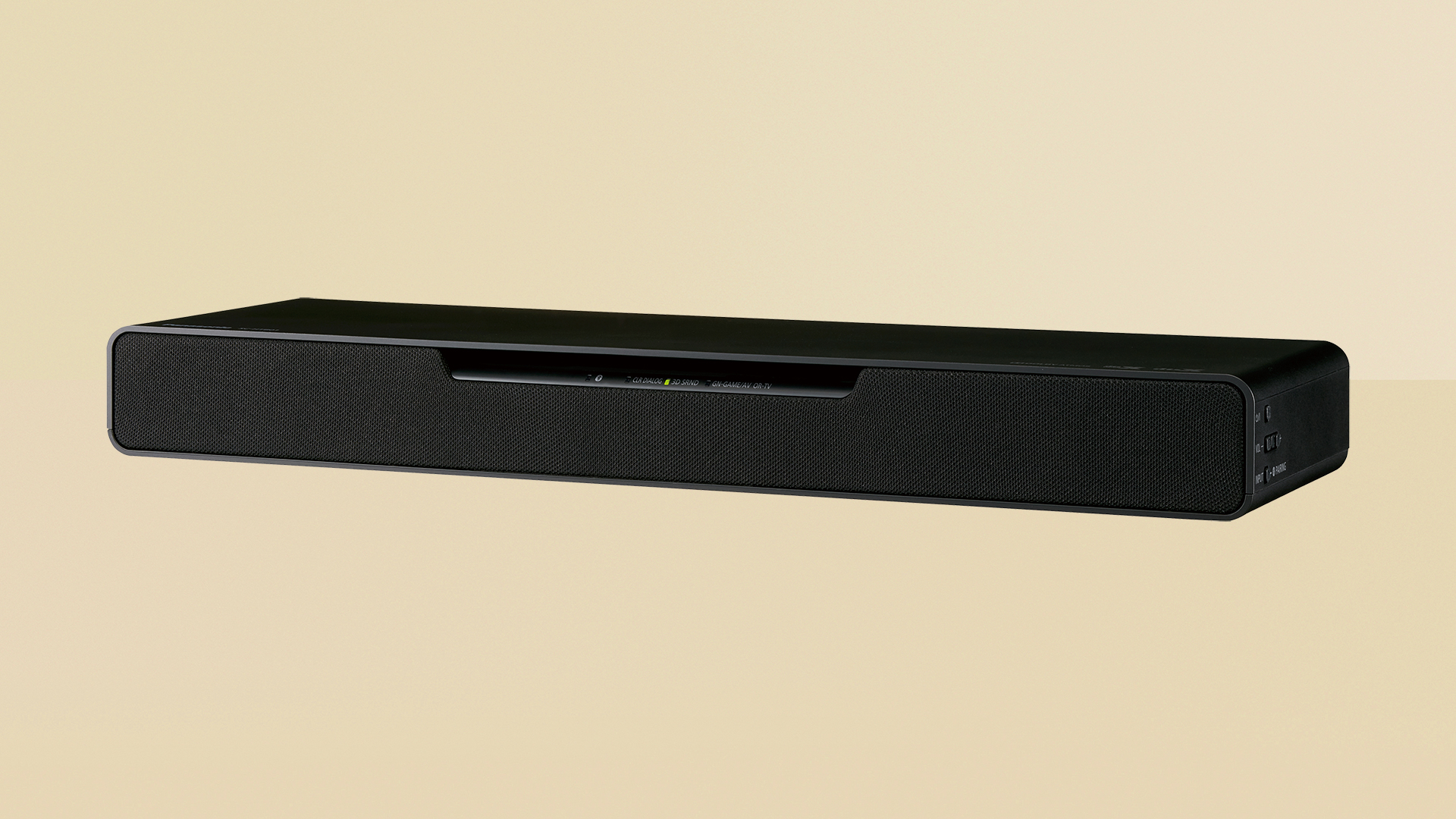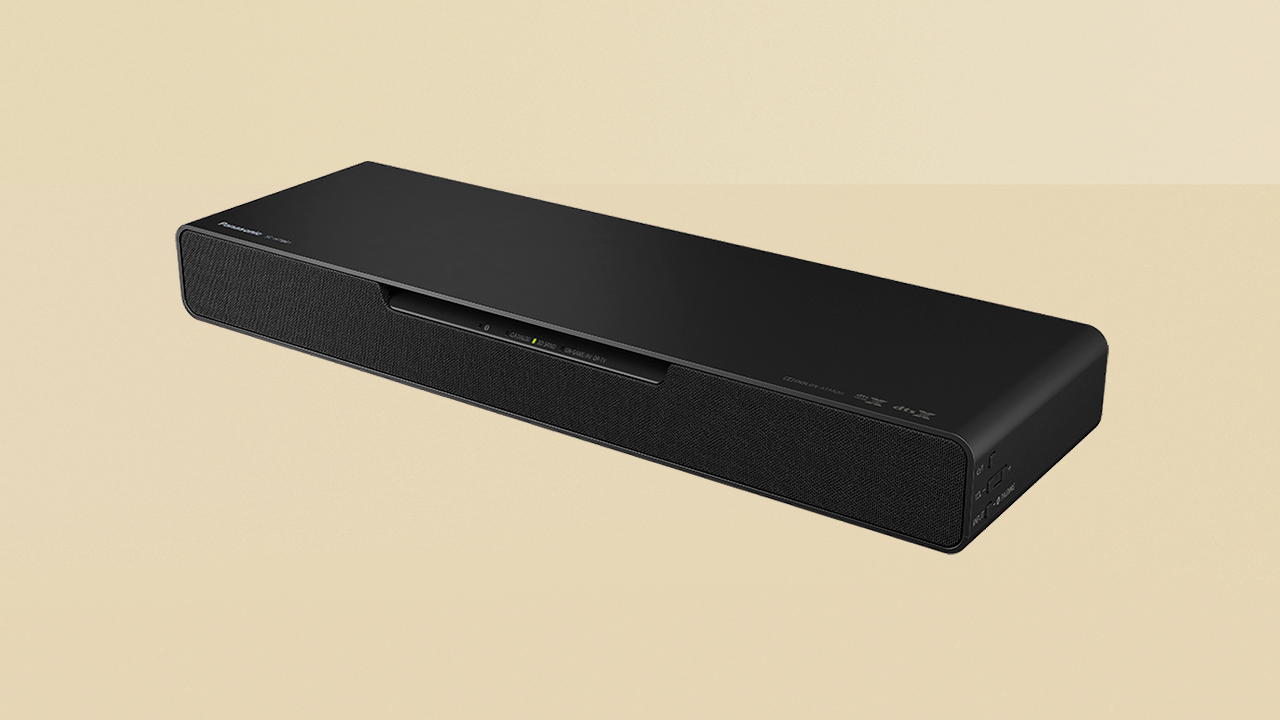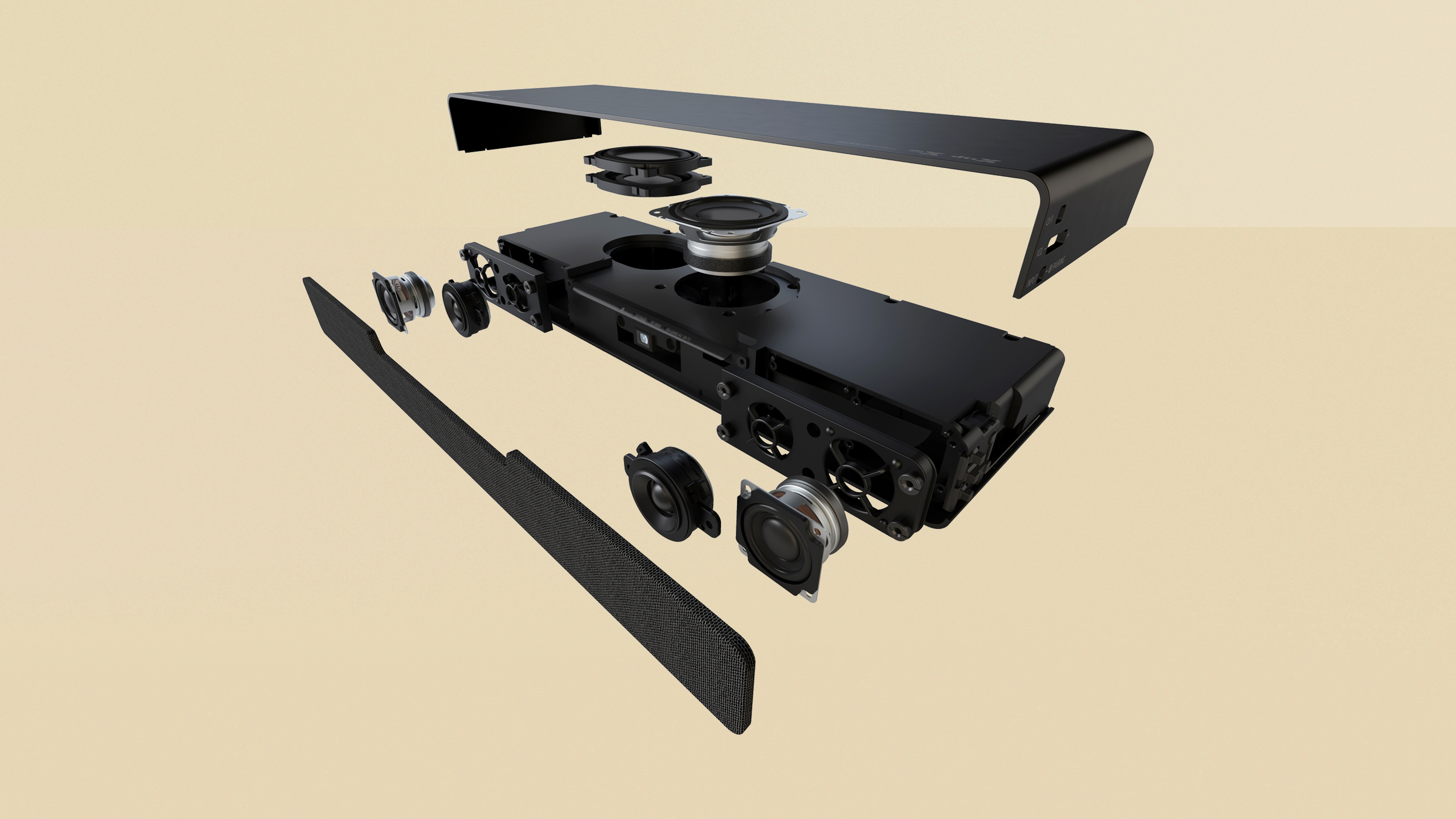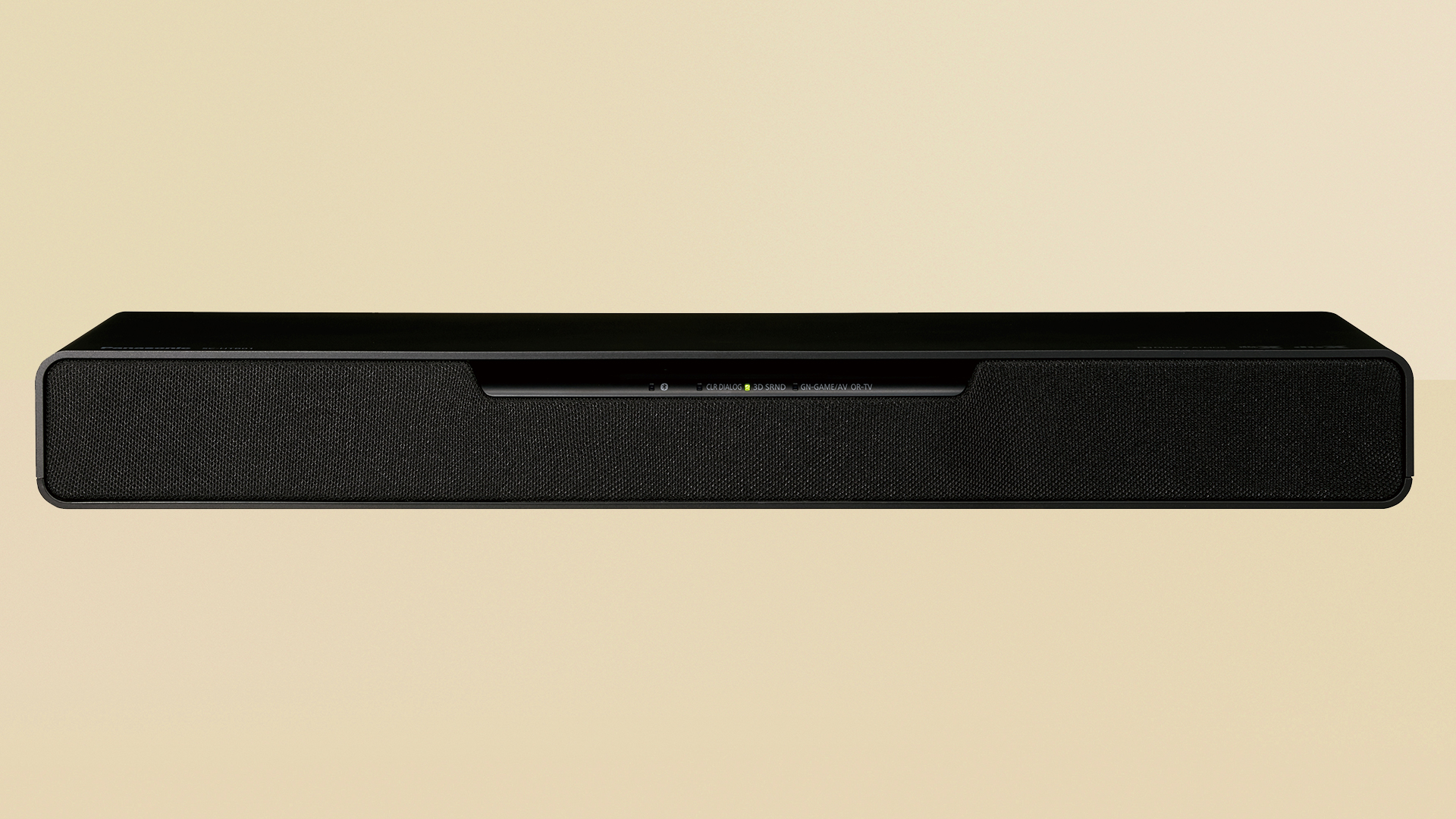Panasonic SC-HTB01 Soundslayer review: a compact soundbar made for games
Panasonic's SC-HTB01 Soundslayer puts way more sound technology into its small box than you'd expect


The Panasonic SC-HTB01 Soundslayer fills a gap in the gaming accessories market that’s a lot bigger than this soundbar.
-
+
Capable of assertive, chunky sound
-
+
Usefully compact
-
+
Specific gaming modes
-
-
Can sound a little blunt
-
-
Unpleasant remote control
-
-
Bigger alternatives deliver bigger sound
Why you can trust T3

The Panasonic SC-HTB01 Soundslayer is filling a conspicuous gap. It’s common knowledge that the gaming industry is important. It employs loads of people, it generates loads of money, and its output is just as worthy of the description ‘art’ as that of the film industry. But for some reason, the consumer electronics industry has been much slower to offer gamers an upgrade to their sonic experience than it has movie enthusiasts, and gaming tends to be an afterthought in most of the best soundbars.
But Panasonic – not, with respect, generally considered the most proactive of electronics brands – has stepped in to put this right. The SC-HTB01 soundbar (wihch you might prefer to the rather overexcited ‘Soundslayer’ title) has been designed and specified with the gaming experience as a primary consideration.
With the PS5 and Xbox Series X rapidly filling up homes, and the best gaming TVs offering the visual experience to match, it's time for a sound upgrade too, right?
Panasonic SC-HTB01 Soundslayer review: Price & features

At £249/$299, the SC-HTB01 Soundslayer is not quite the entry-level bargain its extremely compact dimensions (431x132x52mm) might suggest, but comes in nicely at the affordable end, still. Having said that, though, it’s not specified like an entry-level soundbar either.
At the rear of the cabinet are a couple of HDMI inputs (one in, one out – the output is ARC-enabled) and a digital optical input. Those HDMIs can handle 4K HDR pass-through, too, as well as LPCM multi-channel audio up to 24bit/192kHz standard. There’s also a USB slot, though this is for service and updates only.
As far as wireless connectivity goes, there’s Bluetooth 2.1 – it’s hardly at the cutting edge of wireless technology but is more than adequate for connecting a smartphone and using the Soundslayer as a rudimentary music system.
On the inside, the Panasonic is fitted with 80 watts of Class D amplification that drives a 2.1-channel speaker arrangement. The front of the cabinet features a pair of forward-firing 4cm full-range drivers and a couple of 14mm tweeters, while there is an upward-facing 8cm subwoofer augmented by a 8cm passive radiator facing in the same direction. So don’t position your Soundslayer anywhere with a surface directly above it.
Get all the latest news, reviews, deals and buying guides on gorgeous tech, home and active products from the T3 experts
Although it’s capable of dealing with Dolby Atmos and DTS:X object-based movie soundtracks, the Panasonic has gamers and gaming uppermost in its mind. So while the small, slippy and entirely nasty-feeling remote control handset gives access to various sound modes including ‘standard’, ‘music’ and ‘cinema’, the ‘game’ mode has sub-modes for ‘enhanced voices’, ‘RPG’ and ‘FPS’.
Elsewhere, the remote control has input selection, Bluetooth pairing and volume control. There’s an independent control for subwoofer level, a combination mute/dimmer control, a ‘clear dialogue’ button and another for ‘3D surround’. It’s a pity that, having decided to furnish the SC-HTB01 with a full-function handset, Panasonic decided to make it absolutely the most inexpensive unit it could find.
Panasonic SC-HTB01 Soundslayer review: Sound quality

As a way of bringing a stack more presence, attack and scale to the sound of your gaming experience, without having to rearrange your set-up to do so, the Panasonic SC-HTB01 works brilliantly.
Despite being small enough to sit comfortably below even modestly sized monitors, let alone TVs, the Soundslayer fairly pelts the action out. It’s capable of prodigious low-frequency presence, and is capable of making every explosion, every tread of an enormous mechanised foot, every flying scissors-kick punch far, far harder than the speakers in a monitor have any hope of doing.
This bass action is generally pretty well controlled, too. The Panasonic’s not the last word in controlling the decay of the biggest low-end hits, admittedly, but they don’t overstay their welcome too flagrantly. They can impact on the midrange a little, though, which is a shame because the SC-HTB01 is capable of extracting quite a lot of detail and nuance from the middle of the frequency range. Backing off the subwoofer level using the remote control can liberate the midrange a bit, but it does detract from the bottom-end shock and awe a little too. A separate subwoofer would do a better job, and there are soundbars in this price range that offer them… but then, that would spoil the whole thing about it being one compact unit.
At the top of the frequency range the Panasonic is just as fulsome and just as assertive. That’s all to the good unless you’re really giving it the beans in terms of volume – the higher you crank it, the more the SC-HTB01 starts to sound slightly coarse and blunt in the treble.
There’s a lot of dynamic headroom available here, too. When the game you’re playing shifts from ‘stealthily creeping around in the crouching position’ to ‘full-on assault by massed ranks of alien invaders’ you’ll know all about it.
And there’s worthwhile width and height to the sound the Panasonic generates, too. Its presentation has no problems escaping the confines of the little cabinet, and while there’s no real impression of overhead sound, the SC-HTB01 nevertheless serves up a soundstage that’s way wider than you’re used to from your monitor or TV.
As a device for movies, the Soundslayer is a more qualified success – and for music it’s more qualified still. Again, there’s no shortage of bass presence, no shortage of attack, no shortage of detail and no shortage of dynamism… but subtlety is hard to come by. The concept of ‘light and shade’ isn’t really something the Panasonic is all that familiar with, and as a consequence there’s a rather relentless quality to the sound it serves up. Particularly with music.
Panasonic SC-HTB01 Soundslayer review: Design & usability

At an exceedingly dinky 431x132x52mm, the Panasonic is perfectly proportioned to sit comfortably beneath a gaming monitor or smaller TV. There isn’t a ‘home cinema’-orientated soundbar anything like as compact and unobtrusive as this available anywhere, and as such it could be a great pairing with one of the best 43-inch TVs or 48- to 50-inch TVs just as much as a gaming monitor.
The overall design is discreet to the point of anonymity. The front of the SC-HTB01 is pretty much all acoustic cloth, with a small cutaway for some tell-tale LEDs giving indication of input and so on. These sit in a slight recess, along with a reflex space to give the Panasonic’s subwoofer and passive radiator some breathing room.
As far as usability goes, things couldn’t really be more straightforward. Select input, confirm volume (and subwoofer) level and away you go. If the remote control handset was nicer to hold, things would be pretty much perfect.
Panasonic SC-HTB01 Soundslayer review: Verdict
The magic trick of the Panasonic SC-HTB01 Soundslayer is that it can give you a huge instant boost to your audio without having to rearrange your setup. That's always been the aim of soundbars, but for smaller TVs, it just hasn't been the case a lot of the time.
But the Soundslayer puts a rocket up your gaming sound, and though it may not be the most refined for movies, there's no doubt that it adds depth and excitement there too. No go, be glorious in your game and more immersed in your sound.
Simon Lucas is a freelance technology journalist and consultant, with particular emphasis on the audio/video aspects of home entertainment. Before embracing the carefree life of the freelancer, he was editor of What Hi-Fi? magazine and website – since then, he's written for titles such as Wired, Metro, the Guardian and Stuff, among many others. Should he find himself with a spare moment, Simon likes nothing more than publishing and then quickly deleting tweets about the state of the nation (in general), the state of Aston Villa (in particular) and the state of his partner's cat.
